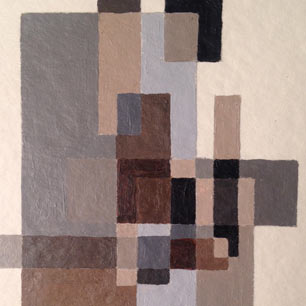<< back
LIST OF TUTORIALS:
1.A shading
1.B chicken scratch sketches
1.C three color painting
1.D finish the face
1.E basic memory drawing
2.A 3D shading: the sphere
2.B 3D shading: cube, cylinder, and cone
2.C contour drawing and memory
2.D blind contour drawing
2.E negative space
2.F sketching using basic shapes and volume
2.G vertical stroke sketch
2.H monochromatic color
2.I triad color
2.J analogous color
2.K complimentary color
2.L neutral color
2.M accented neutral color
2.N muted triad color
2.O mother color
3.A facial proportions, front
3.B facial proportions, profile
3.C the 3D face: volume and planes
3.D the eye
3.E the mouth
3.F the nose
3.G the ear
3.H shading warped planes in space
3.I copy a photograph
3.J composition and design: seven lines
3.K one point perspective
3.L two point perspective
3.M three point perspective
4.A atmospheric perspective
4.B fantasy landscape
4.C drawing the dummy
4.D repeated shapes
4.E elongated figures
4.F relative color
4.G mixing color
5.A cast drawing
5.B proportions and gesture of the figure, front
5.C proportions and gesture of the figure, profile
5.D the figure: basic shapes and volume
5.E drawing the torso
5.F preparing a painting surface
5.G basics of oil painting
5.H cast painting
5.I composition: focal points and emphasis
5.J composition: repeated color
5.K composition: eye movement
5.L still life painting
6.A plein air landscape
6.B drawing the arm
6.C drawing the leg
6.D drawing the hand
6.E drawing the foot
6.F five minute figure line drawings
6.G x-ray figures
6.H drawing the figure from life: gesture drawings
6.I drawing the figure from life: charcoal and lead
6.J drawing the figure from life: ink
6.K drawing the figure from life: toned paper and prismacolor
6.L drawing the figure from life: lead and watercolor
6.M drawing the figure from life: transfer drawing
6.N beginning a portrait with a drawing
6.O direct portrait painting
6.P translucency vs opacity in portrait painting
6.Q paint a self portrait
7.A composing the figure from imagination
7.B square, golden section, and rule of thirds
7.C composing with overlayed eye paths
7.D composing with value sketches
7.E using photography as reference
7.F painting an interior
7.G painting the figure from life: one hour study
7.H painting the figure from life: twenty hour study
7.I the color sketch
7.J blocking out an historical painting
7.K beginning an historical painting
7.L finishing an historical painting
8.A loosening up
8.B beginning an art career: production
8.C beginning an art career: promotion
8.D web design for artists
8.E business organization tips for artists
8.F pushing the boundaries

LESSON 2.L:
NEUTRAL COLOR
Video Length: 15 minutes
How to use color in artwork can be a daunting challenge to navigate. This is part of a series of color theory exercises aimed at giving you confidence when using color. Before doing this exercise, I recommend you do exercises 1.A, 1.C, and 2.H.
Materials you will need for this exercise include:
1. A pencil, 2H or lighter
2. A triangle straight edge
3. An eraser, perhaps kneadable
4. Smooth illustration board or watercolor paper to paint on
5. Four tubes of acrylic paint as indicated in the video
6. A fine round sable paint brush, probably a 2
7. Optional: a larger round sable paint brush to fill in the middles, probably a 6 or larger
8. A palette or paper plate to mix the paint on
9. A cup of water to keep your brush wet and clean
The price for a subscription to this video (which you may access as many times as you wish) is
$8.00
Subscribe to this video on:
Or save $27.00 by purchasing a discounted subscription to all eight color exercises (2.H through 2.O, $64 value)
$37.00
Subscribe to videos 2.H, 2.I, 2.J, 2.K, 2.L, 2.M, 2.N, and 2.0 on: